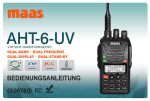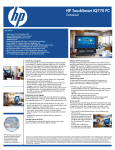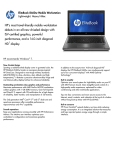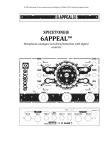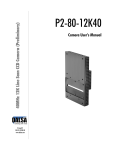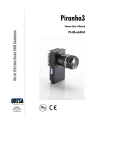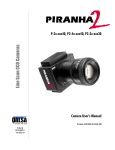Download Volkswagen 2013 Jetta SportWagen Owner`s manual
Transcript
2014 Jetta SportWagen Quick-Start Guide Your Jetta SportWagen comes standard with anything-butstandard convenience. And that’s just the beginning. You’ll also discover dozens of great features that make long drives a little easier, and a lot more fun. Because at Volkswagen, we want to be sure that you’re getting the most out of your time behind the wheel. So we’ve created this guide to take you through it all, and to show you how quickly you’ll be speaking fluent Volkswagen. knowingyourvw.com On-demand videos When you see this symbol, you can discover more with your smart phone by texting the letter keys to the code provided. A video tutorial will be sent to further explain the topic. Text * KYVW9 to 38981 to watch the Introduction to knowingyourvw.com video. Standard text and data rates apply. *Do not text while driving. The information within this guide must be used in conjunction with the information in the Volkswagen Owner’s Manuals. Refer to your vehicle’s Owner’s Manual for all information and warnings. By using this guide, you acknowledge that you are aware of and have read the warnings and information provided in the Owner’s Manual on the topics in this guide and will use this information to augment that material. Table of Contents Bluetooth® Technology 1 Premium VIII Audio 5 iPod® Adapter 7 Manual Climate Control 9 Partial Power Seats 11 Rear Hatch 12 Cruise Control 13 Key Fob Programming 15 Setting the Clock 16 Windshield Wipers 17 Tire Pressure Monitoring System (TPMS) 18 Volkswagen DoubleCheck 19 Bluetooth® Technology Text * PAIR9 to 38981 to watch the Bluetooth® Pairing video. Press OK on the steering wheel (or PAIR on the RNS 315). Standard text and data rates apply. The multifunction display (or your RNS 315 screen) will then show a PIN.** Pairing your phone First, check your phone’s compatibility at www.vw.com/bluetooth. Start the ignition. Your vehicle’s Bluetooth® system will be in “discovery” mode for the next three minutes. (If your vehicle is equipped with an RNS 315 touchscreen display, power it on.) From the Bluetooth® menu on your phone, search for new devices and select VW PHONE. A connection request will appear on the multifunction display (or on the RNS 315). 1 Make sure the same PIN is displayed on your phone and press OK on the steering wheel (or press YES on the RNS 315). Then press PAIR on your phone.† Phone button Reconnect automatically If your phone displays a prompt asking to connect to VW PHONE, make sure to enable future automatic connections. Microphone button *Do not text while driving. **Some phones may require entering a four-digit PIN (0000) to complete the pairing process. †Once the PIN is shown, pairing must be completed within 30 seconds; otherwise the process will need to be repeated. Bluetooth® Voice Recognition Voice recognition tips Call by name Press the microphone button on the multifunction steering wheel. After the chime, your vehicle’s Bluetooth® system will say, “Main menu”. After the chime say, “Call”, followed by the name of the person you want to call. For example, “Call Mike Brown”. The system will answer, “Calling Mike Brown”. *Do not text while driving. Text * VOICE9 to 38981 to watch the Voice Recognition video. Standard text and data rates apply. • The name must be said exactly as it is stored in the directory. If the name is not recognized, ensure you are saying it as it is stored in the directory. • If multiple numbers are stored per name, you may use the shortcut “Call Mike Brown at work”, or the system may ask you to choose (e.g. work, mobile, home). • If at any time during Voice Recognition you wish to cancel a request, simply press the microphone button on the multifunction steering wheel. LEARN MORE AT knowingyourvw.com Bluetooth® Technology Important Safety Instructions and Warnings which you must read, are listed on the last panel under BLUETOOTH® TECHNOLOGY. 2 Bluetooth® Technology 3 Dial by number tips Dial by number Press the microphone button on the multifunction steering wheel. • If the system repeats the number incorrectly, say, “Correct” and repeat the number. After the chime, your vehicle’s Bluetooth® system will say, “Main menu”. • You do not have to include a “1” before the area code. Say, “Dial number”. The system will respond, “Number please”. Redial After the chime, say the number. (Speak the number in single digits 1-2-3.) Press the microphone button on the multifunction steering wheel. The system will repeat the number, and then say, “Continue”. After the chime, your vehicle’s Bluetooth® system will say, “Main menu”. Say, “Redial”. After the chime say, “Dial”. The system will respond, “Redial, Dialing”. Answer an incoming call Help 1. Press the microphone button on the multifunction steering wheel. 2. After the chime, your vehicle’s Bluetooth® system will say, “Main menu”. 3. Say, “Help”, then follow the prompts. 4. You can say, “Help” after any prompt for the system to give you available options. This will take you to further options (e.g. read phone book, call history, or settings). 5. To end prompts, press the microphone button again. The Bluetooth® system will interrupt your car stereo with a ringtone. Press the phone button on the multifunction steering wheel to answer the call. Switch to privacy mode To switch a call to a connected mobile phone to prevent passengers from overhearing the conversation, press and hold the phone button on the multifunction steering wheel. End a call Briefly press the phone button on the multifunction steering wheel. LEARN MORE AT knowingyourvw.com Bluetooth® Technology Important Safety Instructions and Warnings which you must read, are listed on the last panel under BLUETOOTH® TECHNOLOGY. 4 Premium VIII Audio 5 Text * PREMIUM9 to 38981 to watch the Premium VIII Audio video. Standard text and data rates apply. Select and save a preset radio station Press AM, FM or SAT to select a band. Use the tuning knob at the lower right to select a station, then press and hold any preset station soft key until you hear a confirmation beep. The new station will appear in the display. By pressing the Presets soft key, you can change through additional presets. *Do not text while driving. Streaming audio with Bluetooth® technology First, pair your compatible Bluetooth equipped phone or audio player. (Refer to the Bluetooth® pairing instructions on page 1.) ® HD Radio™ Signal Interruption. When leaving the HD coverage area, HD1 channels will switch to the analog signal, while HD2/ HD3 channels will cut off completely, without gradual fading; this is normal. The signal will refresh as you drive. Press the MEDIA hard key. Press the BT-Audio soft key. To navigate through your music, press the PLAY/PAUSE, PREVIOUS, and NEXT TRACK soft keys. NOTE: Premium VIII Audio is available on certain trim lines. HD Radio™ Programming. HD Radio™ is totally free programming, offering crystal clear sound—FM stations have CD-quality sound, while AM stations sound like FM stereo. HD Radio™ also offers more variety, as many FM stations broadcast extra HD multicast channels. SiriusXM® Satellite Radio. New Volkswagen vehicles come with a threemonth trial subscription to the Sirius Select package. Infrequently, tall buildings and tunnels may interrupt the satellite signal; this is normal. The signal will refresh as you drive. For more information, please refer to the SiriusXM® brochure in your glove box. LEARN MORE AT knowingyourvw.com Premium VIII Audio Important Safety Instructions and Warnings which you must read, are listed on the last panel under PREMIUM VIII AUDIO. 6 iPod® Adapter 7 To connect your device, here’s all you need to do RNS 315 Premium VIII First, note that your iPod® music player must be Generation Four or newer. Connect it to your vehicle’s MDI cable. First, note that your iPod® music player must be Generation Four or newer. Press the MEDIA hard key. Connect it to your vehicle’s MDI cable. Press the MEDIA-IN soft key until the external audio device is shown in the display. Audio from your device will play through your speaker system. To choose a song, press the Selection soft key. To choose a song, press the LIST soft key, then the UP soft key. To display the category list, press the UP soft key again. To display the category, press the key with the folder icon at the upper left of the screen. To return to the main screen, press the Back soft key on the upper right corner of the screen. Playing your media device with the auxiliary jack First, plug in your media device to the auxiliary jack. Note that an auxiliary cable does not come standard. Premium VIII RNS 315 1. Press the SETUP hard key. 1. To toggle between different media, such as a CD or streaming audio from your phone, press the MEDIA hard key. 2. Press the MEDIA soft key. 2. Then press the media specific soft key. 3. Press the Enable AUX Input soft key. 4. Press the MEDIA hard key. LEARN MORE AT knowingyourvw.com Important Safety Instructions and Warnings which you must read, are listed on the last panel under iPOD® ADAPTER. iPod® Adapter 8 Manual Climate Control Cool the interior 9 Defrost the windshield Standard text and data rates apply. Turn the temperature to MAX AC. Turn the fan speed to 4. Turn the vent dial to the Text * CLIMATE9 to 38981 to watch the Cooling and Heating video. • Turn the vent dial to the setting. • For optimal performance, the AC function will come on automatically to dry the air. setting. The air recirculation light will come on automatically. After reaching the desired temperature, turn the fan speed down to a lower setting and turn off recirculation. • Turn the temperature dial to HI. Heat the interior Turn the temperature dial to HI. Turn the fan speed to 3. • Turn the fan speed to 3. Turn the vent dial to the setting. *Do not text while driving. LEARN MORE AT knowingyourvw.com Important Safety Instructions and Warnings which you must read, are listed on the last panel under MANUAL CLIMATE CONTROL. Manual Climate Control 10 Partial Power Seats 11 Recline your seat Use the vertical button on the left side of the seat. It moves the seat back in the same direction that you push it. Lumbar support Adjust your seat forward or back 1. Pull up on the handle under the driver’s seat. 2. Rock forward or back to a comfortable position. 3. Release the handle to lock the seat in place. Recline seat Adjust seat height Adjust your seat height Use the lever directly beneath the left side of the seat. Pull up to raise the seat. Push down to lower the seat. Important Safety Instructions and Warnings which you must read, are listed on the last panel under PARTIAL POWER SEATS. Rear Hatch Text * HATCH9 to 38981 to watch the Rear Hatch Operation video. Standard text and data rates apply. Open the hatch • Press the trunk button on the key fob or inside the driver’s door. Close the hatch Grab the ergonomic handles located near the outer corners of the interior and pull. • The hatch will pop open slightly. • Press the large button (called the microswitch) above the license plate and lift the hatch open. *Do not text while driving. LEARN MORE AT knowingyourvw.com Important Safety Instructions and Warnings which you must read, are listed on the last panel under REAR HATCH. Power Seats / Rear Hatch 12 Cruise Control 13 Text * CRUISE9 to 38981 to watch the Cruise Control video. Standard text and data rates apply. Activate • Locate the cruise control stalk on the left hand side of the steering column. Rocker switch • T urn the switch on top of the cruise stalk to the ON position. • T he speedometer icon will appear in the multifunction display. *Do not text while driving. mph 60 Set cruising speed Cancel and resume When you get to your cruising speed, press the rocker switch at the end of the cruise stalk towards SET/ –. The green CRUISE light will appear in the instrument cluster. • To cancel the cruise speed, press the brake pedal or turn the switch on the top of the stalk to CANCEL. To increase your speed by 1 mph, press the rocker switch up, towards RES/+. • The CRUISE light will go off. To reduce your speed by 1 mph, press the rocker switch down, towards SET/–. Your most recently set speed will appear as a small icon in the available multifunction display. It will remain in memory until you turn off the vehicle, or until you turn the switch on the top of the cruise stalk to the OFF position. • T o resume your speed, press the rocker switch up, towards RES/+. LEARN MORE AT knowingyourvw.com Important Safety Instructions and Warnings which you must read, are listed on the last panel under CRUISE CONTROL. Cruise Control 14 Key Fob Programming 15 Customize which doors lock or unlock when you press the key fob First, make sure your vehicle is parked. Your vehicle won’t let you do this while you’re driving. Press the button with the menu icon located on the steering wheel until you see the “Settings” screen on the multifunction display. Press “Unlock doors” to adjust which doors lock or unlock when the key fob is pressed once. “All doors” unlocks all doors. “Single door” unlocks only the driver’s door. Menu button “Vehicle side” unlocks the doors on the driver’s side of the vehicle. Press the down arrow to scroll to “Convenience”. Press OK. Press the up or down arrows to select an option. Scroll down to “Central Locking”. Press OK. Press OK to select your preference. Important Safety Instructions and Warnings which you must read, are listed on the last panel under KEY FOB. Setting the Clock Text * CLOCK9 to 38981 to watch the Clock Setting video. Standard text and data rates apply. Turn the ignition On. Press the Menu/Clock button to highlight the hour in the instrument cluster display. To advance the hour, push the . Press and hold the button to fast forward through the hours. Press the Menu/Clock button again to highlight the minutes. The minutes can be advanced, like the hours, by pressing the through the minutes. . Press and hold the button to fast forward Press the Menu/Clock button again to complete the procedure. Driving on today’s roads demands the full attention of the driver at all times. Driver distraction causes accidents, collisions, and serious personal injury. Never use the buttons in the instrument cluster while driving. *Do not text while driving. LEARN MORE AT knowingyourvw.com 16 Key Fob / Setting the Clock Windshield Wipers 17 Continuous LOW: From the OFF position, move the wiper stalk two clicks up. HIGH: From the OFF position, move the wiper stalk three clicks up. Pulsing/quick wipes From the OFF position, press the wiper stalk down for a single wipe. Wash Turn on rear wiper Pull the stalk toward you to spray washer fluid. • Simply push the lever one click away from you. • A lso, anytime you have the front wipers on and you put the vehicle into reverse, the rear wipers activate automatically. Text * WIPERS9 to 38981 to watch the Windshield Wipers Operation video. Rear wash To clean the rear window, push the lever two clicks to send a spray of washer solvent onto the rear window and to activate the rear wiper. You can also hold it in this position for longer washing. Standard text and data rates apply. Important Safety Instructions and Warnings which you must read, are listed on the last panel under WINDSHIELD WIPERS. *Do not text while driving. Tire Pressure Monitoring System (TPMS) Seeing the TPMS light? Here’s what to do. The correct tire pressure is displayed on the sticker on the driver’s door jamb. Inflate your tires to those specifications, not to the number on your tires. Correct tire pressure TPMS set button Cooler temperatures may cause a warning to appear and then If you see the TPMS light on your instrument panel or the message “Tire pressure too low” in the multifunction display, check all tires and inflate the low tires to the correct pressure as soon as possible. After inflating the low tire(s) to the correct pressure, turn the ignition on and press the SET button inside the glove compartment for five seconds, until you hear the chime. disappear as the tires warm up. This is a good reminder to check and adjust the tires to the proper inflation pressure. The TPMS light will go out after 20 minutes of normal driving. LEARN MORE AT knowingyourvw.com Important Safety Instructions and Warnings which you must read, are listed on the last panel under TIRE PRESSURE MONITORING SYSTEM (TPMS). Windshield Wipers / TPMS 18 Volkswagen DoubleCheck 19 Got questions? We’ve got answers. Go to knowingyourvw.com Owning a VW gets even better. knowyourvw.com is a dedicated website that provides “how-to” video tutorials for operating many of the features found on your Volkswagen. Video tutorials are able to be viewed from your desktop or on a mobile device. Call your dealer to make an appointment for your Volkswagen DoubleCheck, also known as your second vehicle delivery, within 30-days of ownership. At the appointment, we’ll answer any questions you may have about your new Volkswagen, so you can get more out of your vehicle. Call 1-800-444-8982 Contact the Volkswagen Loyalty Center, and a friendly Volkswagen representative will be happy to assist you. Volkswagen Carefree Maintenance* | As a Volkswagen driver, you can visit any VW dealer and receive routine maintenance like oil changes and vehicle inspections from certified techs that speak fluent Volkswagen. Volkswagen DoubleCheck Appointment: | Month | Day | Year Time LEARN MORE AT knowingyourvw.com *The Volkswagen Carefree Maintenance Program covers the vehicle’s scheduled maintenance for two years or 24,000 miles, whichever occurs first, only on 2014 models. This program does not apply to 2009-2013 models. Some restrictions apply. See dealer or vehicle maintenance program booklet for details. 20 Volkswagen DoubleCheck Important Safety Instructions and Warnings BLUETOOTH® TECHNOLOGY • Accidents and injuries can occur if the driver is distracted. Speaking on or using a phone while driving can distract the driver from traffic. • Select the volume settings so that the acoustic signals from the outside are still audible (e.g. the sirens of emergency rescue vehicles). Obey all applicable legal requirements. • In areas without mobile network coverage or with poor mobile network coverage, as well as in some tunnels, garages and subways, phone conversations may be interrupted, and it may be impossible to make phone calls – even emergency calls. • In some countries and/or certain mobile networks, emergency calls may only be supported when the mobile phone is connected to a mobile phone package which has a SIM card which is “blocked” and/or has sufficient calling credit on it, and adequate network coverage. • A mobile phone on the seat, instrument panel or in other places can be thrown around the inside of the vehicle during a sudden braking maneuver, crash or other accident and cause injury to vehicle occupants. • Never place or mount a mobile phone on doors, the windshield, on or near the area on the steering wheel marked “AIRBAG”, the instrument panel, the seat backrests or the areas between these points and the driver/passengers. Mobile phones can lead to serious injuries in cases of accidents, especially when the airbags are inflated. • Always switch off your mobile phone at gas stations or wherever there is a fire or explosion hazard. The electromagnetic radiation can cause sparks that can ignite fuel vapors and cause a fire. • The mobile phone will automatically connect to the mobile network when the Bluetooth® connection to the mobile phone package is disconnected. • Using a radio device in the vehicle without a connection to an external antenna might exceed electromagnetic radiation thresholds. This also applies if the outside antenna is not installed properly. • Always keep the cell phone antenna at least 8 inches (20 cm) away from pacemakers. Heart specialists advise that cell phones can adversely affect the way pacemakers work. • Never carry a mobile phone that is switched on in the breast pocket directly over the pacemaker. to small children. • Never remove the key from the ignition switch while the vehicle is moving or rolling to a stop. The steering wheel will lock and you will not be able to steer or control the vehicle. MANUAL CLIMATE CONTROL • Poor visibility increases the risk of collisions and other accidents that cause serious personal injuries. • Always make sure all windows are clear of ice, snow and condensation for good visibility to the front, sides, and rear. • Maximum heating output and defrosting performance are not possible until the engine has reached operating temperature. Wait until you have good visibility before driving off. • Always make sure you know how to properly use the climate control system as well as the rear window defroster that you will need for good visibility. • Never use air recirculation for long periods of time. When the air conditioner is off and recirculation mode is on, condensation can quickly form on the windows and greatly reduce visibility. • Always switch off recirculation mode when it is not needed. • Stale air causes driver fatigue and reduces driver alertness, which can cause accidents, collisions and serious personal injury. • Never switch off the fan for a long period of time and never use air recirculation for along period of time because no fresh air will enter the passenger compartment. • When the air conditioner is off and recirculation mode is on, condensation can quickly form on the windows and greatly reduce visibility. PARTIAL POWER SEATS • Improper seating positions increase the risk of severe or fatal injuries in a crash or other accidents, especially when the airbag deploys. • All occupants must sit properly and be properly restrained at all times. • Never let more people ride in the vehicle than there are seating positions with safety belts available. • Always secure children in the vehicle with an approved and suitable restraint system appropriate for their age, weight, and height. • Always keep your feet on the floor in front of the seat. Never rest them on the seat, instrument panel, out of the window, etc. The airbag system and safety belt will not be able to protect you properly and can even increase the risk of • If you suspect there may be interference with a pacemaker or other medical device, switch the mobile phone off immediately. • The center armrest can interfere with the driver’s elbow movement and thus cause accidents and severe injuries. • Always keep the armrest closed while driving. CRUISE CONTROL • Using the cruise control when it is not possible to drive safely at a constant speed can be dangerous and can lead to an accident and serious personal injuries. • Never use cruise control when driving in heavy or varying traffic or when you cannot keep a safe distance between you and the vehicles ahead of you. • Never use cruise control on steep, winding, or slippery roads (such gravel roads, wet roads, or snowy or icy roads) or on roads with standing water. • Never use cruise control when driving off road or on unpaved roads. • Always adjust your speed and the distance you keep between you and the vehicles ahead of you to the road, traffic, weather, and visibility conditions. • To help prevent unintended operation of cruise control, switch the system off when it is not being used. • It is dangerous to use the Resume feature when the previously set speed is too high for the existing road, traffic, or weather conditions. • When going downhill, the cruise control may not be able to maintain a constant speed. The vehicle will speed up because of its own weight. Downshift and/or use the foot brake to slow the vehicle. • Failure to heed warning lights and instrument cluster text messages can cause the vehicle to break down in traffic and result in a collision and serious personal injury. • Never ignore warning lights or text WARNINGS. • Always stop the vehicle as soon as it is safe to do so. IPOD® ADAPTER • Driver distraction, including the operation of external audio devices, can cause accidents and serious personal injury. • Always focus your undivided attention on driving the vehicle. • Never display video images in the display when the vehicle is moving. • Use the radio navigation system only if road, traffic, and weather conditions permit and you will not be distracted from your driving. • Always obey applicable laws regarding the use of displays when the vehicle injury in a crash. • Always adjust seat, safety belts, and head restraints properly before driving and make sure that all passengers are properly restrained. • Push the passenger seat as far back as possible. Always be sure that there are at least 10 inches (25 cm) between the front passenger’s breastbone and the instrument panel. • Always adjust the driver’s seat and the steering wheel so that there are at least 10 inches (25 cm) between your breastbone and the steering wheel. • Adjust the driver’s seat so that you can easily push the pedals all the way to the floor while keeping your knee(s) slightly bent. The distance to the instrument panel in the knee area must be at least 4 inches (10 cm). • If these requirements cannot be met for physical reasons, contact an authorized Volkswagen dealer or an authorized Volkswagen Service Facility to see whether adaptive equipment is available. • Always hold the steering wheel on the outside of the steering wheel rim with your hands at the 9 o’clock and 3 o’clock positions to help reduce the risk of personal injury if the driver’s airbag inflates. • Never hold the steering wheel at the 12 o’clock position or with your hands at other places inside the steering wheel rim or on the steering wheel hub. Holding the steering wheel the wrong way can cause serious injuries to the hands, arms, and head if the driver’s airbag inflates. • Pointing the steering wheel toward your face decreases the ability of the driver’s airbag to help protect you in a collision. • Never drive with backrests reclined or tilted back farther than necessary to drive comfortably. The farther back the backrests are tilted, the greater the risk of injury caused by incorrect positioning of the safety belts and improper seating position. • Never drive with the front seat passenger backrest tilted forward. If the front airbag deploys, the front backrest can be forced backward and injure passengers on the rear seat. • Sit as far back as possible from the steering wheel and the instrument panel. • Always sit upright with your back against the backrest with the front seats properly adjusted. Never lean against or place any part of your body too close to the area where the airbags are located. • Rear seat passengers who are not properly seated and restrained are more likely to be seriously injured in a crash. • Improper adjustment of the seats can cause accidents and severe injuries. is moving. • Always adjust volume so that horns and warning sounds from outside the vehicle (e.g. police and fire truck sirens) can be clearly heard at any time. • Observe legal regulations. • Always drive attentively and responsibly. • Setting the volume too high can damage the hearing. This applies especially to volumes above about 85 decibels. • Select volume settings so that acoustic signals from the outside are always audible (e.g. the sirens of emergency rescue vehicles). • Please lower the volume before changing or connecting to an audio source. • Unmounted or improperly mounted external devices can be thrown through the passenger compartment in the event of a sudden driving or braking maneuver or an accident, causing injury. • Never leave external devices in the doors, on the front windshield, on or near the area marked “AIRBAG” on the steering wheel, instrument panel, seat backs, or between these areas and the occupants. External devices can cause serious injury in the event of an accident, especially if the airbags inflate. • Connecting cables of external devices may obstruct the driver. Route cables so as not to interfere with the driver. • The armrest can affect the elbow room of the driver and thus cause accidents and severe injuries. Always keep the armrest closed while driving. KEY FOB • Improper use of vehicle keys can result in serious personal injury. • Always take the key with you when you leave the vehicle. It can be used to start the engine and operate vehicle systems such as the power windows, leading to serious personal injury. Children or other unauthorized persons could also lock the doors and the luggage compartment. • Never leave children, disabled persons, or anyone who cannot help themselves in the vehicle. The doors can be locked with the remote control vehicle key. This could leave people trapped in the vehicle in an emergency. Depending on the time of year, people trapped in the vehicle can be exposed to very high or very low temperatures. • A closed vehicle can become very hot or very cold, depending on the season. Particularly in the summer, heat build-up in the passenger and luggage compartment of a parked vehicle can result in temperatures in the vehicle that are much higher than the outside temperatures. Temperatures can quickly reach levels that can cause unconsciousness and death, particularly • Never adjust the seats while the vehicle is moving. Your seat may move unexpectedly and you could lose control of the vehicle. In addition, you will not be in the correct seating position while adjusting the seats. • Adjust the front seat height, angle and longitudinal direction only if the seat adjustment area is clear. • The adjustment of the front seats must not be restricted by things in the foot well in front or behind the seats. • Some kinds of cigarette lighters can be lit unintentionally, or crushed causing a fire that can result in serious burns and vehicle damage. • Always make sure that there are no lighters in the seat tracks or near other moving parts before adjusting the seats. • Before closing a storage compartment, always make sure that no cigarette lighter can be activated, crushed, or otherwise damaged. • Never leave a cigarette lighter in a storage compartment, on the instrument panel, or in other places in the vehicle. Heat build up in the passenger and luggage compartment of a parked vehicle can result in temperatures in the vehicle that are much higher than the outside temperatures, particularly in summer. High temperatures could cause the cigarette lighter to catch fire. PREMIUM VIII AUDIO • Driver distraction can cause accidents and serious personal injury. Operating the radio navigation system while driving can distract the driver from traffic situations. • Always drive attentively and responsibly. • Select volume settings so that acoustic signals from the outside are audible (e.g. the sirens of emergency rescue vehicles). • Setting the volume too high can damage hearing. This can also extend to short exposure of the ears to loud volumes. • Sudden volume fluctuations may occur when the audio source is changed or connected. • Lower the volume before changing or connecting to an audio source. • Connecting cables of external devices may obstruct the driver. • Route cables so as not to interfere with the driver. • Unmounted or improperly mounted external devices can be thrown through the passenger compartment in the event of a sudden driving or braking maneuver or an accident, causing injury. • Never leave external devices in the doors, on the front windshield, on or near the area marked “AIRBAG” on the steering wheel, instrument panel, and seat backs or between these areas and the occupants. External devices can cause serious injury in the event of an accident, especially if the airbags inflate. • The center armrest can interfere with the driver’s elbow movement and thus cause accidents and severe injuries. • Always keep the armrest closed while driving. • Injuries can be caused by invisible laser beams if the housing of the CD player is opened. • Have the CD player repaired only by a specialist. REAR HATCH • Accidents and severe personal injuries can result if you unlock, open, or close the rear hatch when someone is in the way. • Only open or close the rear hatch if no one is in the way. • After closing the rear hatch, always make sure that it is properly closed and locked so that it cannot open suddenly when the vehicle is moving. The closed rear hatch must be flush with the surrounding auto body parts. • Always keep the rear hatch closed while driving to help keep poisonous exhaust gas from being drawn into the vehicle. • Never open the rear hatch when a luggage rack is installed and loaded. If, for example, there are bicycles on a carrier on the rear hatch, it is possible that the lid will not be able to open automatically. An open rear hatch may fall on its own because of the additional weight. The open rear hatch must be supported or the weight must be removed from the luggage rack first. • Close and lock the rear hatch and all doors when the vehicle is not in use. First, make sure that no one is left inside the vehicle. • Never leave your vehicle unattended or let children play around your vehicle, especially when the rear hatch is open. A child could crawl into the vehicle and pull the rear hatch shut, becoming trapped and unable to get out. A closed vehicle can become very hot or very cold, depending on the season. Particularly in the summer, heat build-up in the passenger and luggage compartment of a parked vehicle can result in temperatures in the vehicle that are much higher than the outside temperatures. Temperatures can quickly reach levels that can cause unconsciousness and death, particularly to small children. • Never leave children or anyone who cannot help themselves behind in the vehicle. They may lock the vehicle with the vehicle key or the power locking switch and lock themselves in. • If the rear hatch is not closed properly, it may open suddenly when the vehicle is moving and cause severe injuries. Stop immediately and close the rear hatch. • Always make sure the rear hatch is securely latched after you close it. • If a bicycle or luggage rack is installed on the rear hatch, it may be hard to see that the rear hatch is unlatched. An unlatched rear hatch may open suddenly when the vehicle is moving. TIRE PRESSURE MONITORING SYSTEM (TPMS) • Incorrect tire pressures and/or under inflation can cause sudden tire failure, loss of control, collision, serious personal injury or even death. • When the warning symbol appears in the instrument cluster, stop and inspect the tires. Under inflation can cause increased tire wear and can affect the handling of the vehicle and stopping ability. • Incorrect tire pressures and/or under inflation can also lead to sudden tire failure, including a blowout and sudden deflation, causing loss of vehicle control. • The driver is responsible for the correct tire pressures for all tires on the vehicle. The recommended tire pressure values are listed on a sticker inside the driver door. • The TPMS can only work correctly when all tires on the vehicle are filled to the correct cold tire inflation pressure. • Using incorrect tire pressure values can cause accidents or other damage. Always inflate the tires to the correct specified cold tire pressure values for the tires installed on the vehicle. • Always maintain correct cold tire inflation pressure so that TPMS can do its job. • Always inflate tires to the recommended and correct tire pressure before driving off. • Driving with under inflated tires causes them to flex (bend) more, letting them get too hot, resulting in tread separation, sudden tire failure, and loss of control. • Excessive speed and/overloading can cause heat build-up, sudden tire failure and loss of control. • If the tire pressure is too low or too high, the tires will wear prematurely and the vehicle will not handle well. • If the tire is not “flat” and you do not have to change a wheel immediately, drive carefully and at reduced speed to the nearest service station to check the tire pressure and add air as required. • When replacing tires or wheel rims on vehicles equipped with TPMS always read and heed the information and all WARNINGS. • The Tire Pressure Monitoring System must be recalibrated using the SET button whenever you remove and remount or change any wheel or tire on the vehicle, even if the reinstalled or replacement wheels and tires are identical to those that were removed and even if the tire pressure does not change. • Improper use of the SET button can cause the TPMS to give false warnings or to give no warning despite dangerously low tire pressure. WINDSHIELD WIPERS • Windshield washer fluid without enough frost protection can freeze on the windshield and reduce visibility. • Use the windshield washer system with enough frost protection for winter temperatures. • Never use the windshield wipers/washers when it is freezing without first defrosting the windshield. The washer solution may freeze on the windshield and reduce visibility. • Worn or dirty wiper blades reduce visibility and increase the risk of accidents and severe injuries. • Always replace wiper blades that are worn, damaged, or do not keep the windshield clear. • Never mix antifreeze or similar additives into the windshield washer reservoir. This could produce an oily film on the windshield, which would considerably reduce visibility. • Use clear water with a cleaning solution recommended by Volkswagen. • If necessary, blend with a suitable windshield washer fluid antifreeze agent. 2014 Jetta SportWagen Volkswagen of America | knowingyourvw.com “Volkswagen”, “Das Auto”, and the Volkswagen logo are registered trademarks of Volkswagen AG. ©2013 Volkswagen of America, Inc. MY14-QSG-JSW-01


















